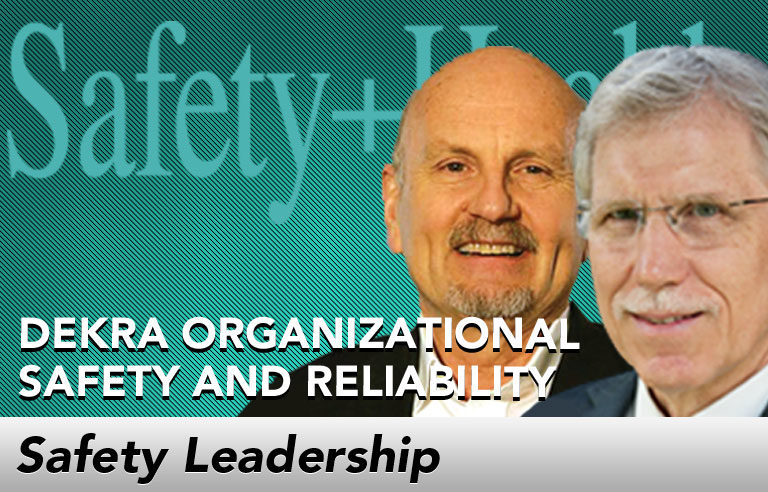Safety Leadership: Moving the needle on worker engagement

Editor’s Note: Achieving and sustaining an injury-free workplace demands strong leadership. In this monthly column, experts from global consulting firm DEKRA Organizational Safety and Reliability share their point of view on what leaders need to know to guide their organizations to safety excellence.
Worker engagement sounds like a no-brainer. Studies show that engaged workers are more productive, more supportive of leadership, more committed to improving the organization and less likely to leave. Engaged workers identify with the company mission, seek to live its values, and serve as ambassadors inside and outside the organization. What’s more, organizations with broad worker engagement tend to outperform other organizations.
It takes hard work to achieve worker engagement. One issue, however, significantly raises the likelihood that an organization will be successful in mobilizing its employees: safety. Indeed, safety is the key to creating an engaged workforce, because if there is one value everyone in the organization shares, it is to go home without injury.
Determining how to engage workers requires leadership to understand two terms that are sometimes used interchangeably but are quite different:
Involved employees: These employees offer ideas, expertise and energy to solve problems. Involvement usually happens upon request of management.
Engaged employees: An engaged worker is enthusiastic about work and is willing to take positive action to further the organization, its reputation and its interests in an appreciative organizational environment.
Increasing employee engagement
Consider the following: A friend asks you what it is like to work for your company. What thoughts come to mind?
How you respond is based on the work, working conditions and workplace culture. How you think about these relationships has a significant impact on your level of engagement.
Social exchange theory explains how our perceptions of fairness enter into the relationship we have with another person. The law of reciprocity describes the social principle that if you do something for someone else, you expect them to reciprocate. The more one does for someone else, the more the receiver feels the pull. Relationships break down when one side breaks this social exchange and there is no reciprocity.
Getting employees involved in a safety activity that truly advances the cause of workplace safety helps build the relationship foundation that leads to an engaged employee.
How to move the needle on engagement
When implementing safety involvement activities, organizations need to:
- Ask themselves, “Why are we doing this?”
- Define the benefits and set the objectives.
- Design or pick an intervention that’s right for the culture and in line with the objectives.
- Prepare all levels of leadership for redistribution of power.
- Enroll the employees.
- Recruit early adopters.
- Use discovery-based vs. static learning.
- Roll out and support the system.
We all would like to be able to identify the exact moment when an organization moves from involvement to engagement. The problem is that it isn’t like watching a light switch move from off to on.
Instead, it’s a gradual shift, starting with a few employees and expanding as leadership demonstrates caring and trust in the employees. When an organization has demonstrated it values safety, workers will volunteer to get involved.
When employees participate in a successful and rewarding involvement activity, their personal level of engagement will move upward. Leadership must then figure out how to expand safety involvement.
This isn’t achieved by demanding involvement. It requires purposeful planning and patience.
This article represents the views of the author and should not be construed as a National Safety Council endorsement.
 William Bozzo, vice president of DEKRA Organizational Safety and Reliability (dekra.us), has guided numerous operations, startups, decommissions, and program implementations and integrations. He has extensive expertise in high-level planning for environmental, safety and health; sustainability; risk management; quality assurance; and strategic design.
William Bozzo, vice president of DEKRA Organizational Safety and Reliability (dekra.us), has guided numerous operations, startups, decommissions, and program implementations and integrations. He has extensive expertise in high-level planning for environmental, safety and health; sustainability; risk management; quality assurance; and strategic design.
 Donald Groover, senior vice president of DEKRA OSR, works with senior executives and leadership teams throughout the world to help them develop an understanding of the current state of exposure control and to develop strategic safety-driven culture change.
Donald Groover, senior vice president of DEKRA OSR, works with senior executives and leadership teams throughout the world to help them develop an understanding of the current state of exposure control and to develop strategic safety-driven culture change.
Direct to your inbox: Sign up to be notified in email about new "Safety Leadership" columns.
Post a comment to this article
Safety+Health welcomes comments that promote respectful dialogue. Please stay on topic. Comments that contain personal attacks, profanity or abusive language – or those aggressively promoting products or services – will be removed. We reserve the right to determine which comments violate our comment policy. (Anonymous comments are welcome; merely skip the “name” field in the comment box. An email address is required but will not be included with your comment.)

